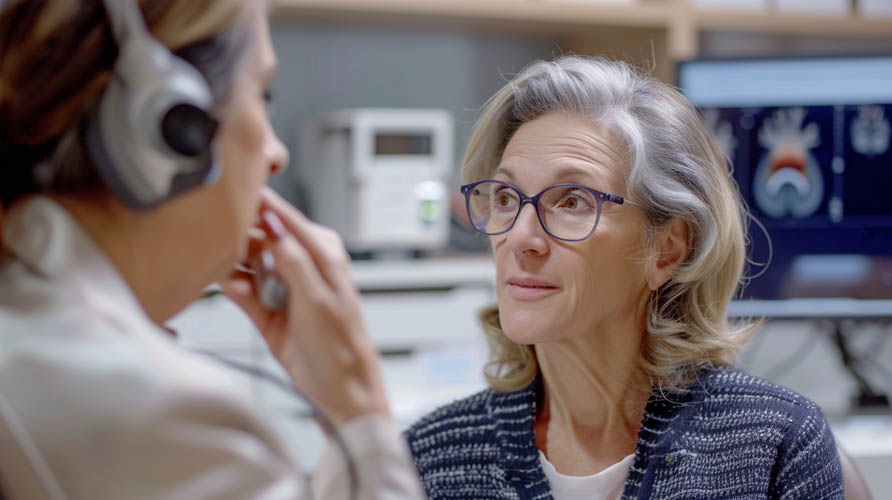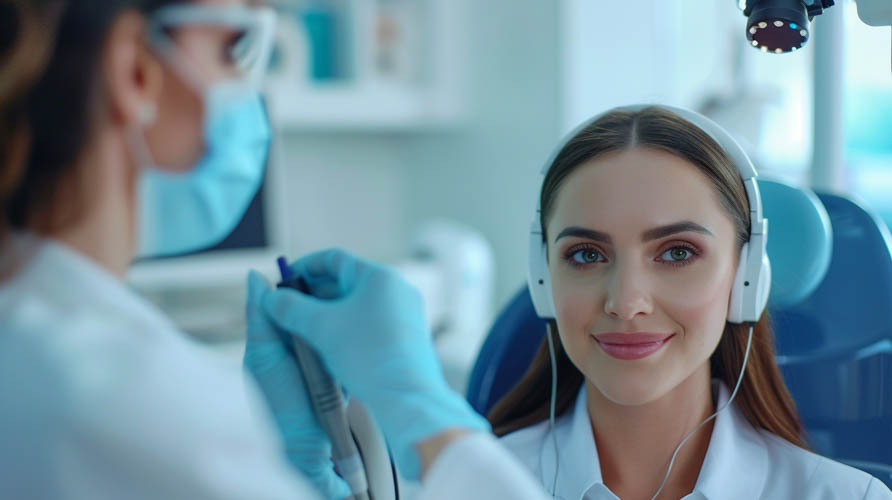A comprehensive hearing evaluation for adults begins with an initial consultation to discuss your hearing concerns and medical history. You will undergo pure tone audiometry to measure hearing sensitivity across different frequencies. Speech recognition testing assesses how well you understand spoken words in various environments. Tympanometry and acoustic reflex tests examine eardrum movement and reflexes to diagnose issues such as fluid build-up. After the tests, the specialist reviews the results, explains the nature and extent of any hearing loss, and recommends management strategies. If you wish to uncover the full picture, there is much more to explore.
Initial Consultation
During the initial consultation, you will discuss your hearing concerns and medical history with a hearing specialist. This is a crucial step as it helps the specialist understand any potential factors contributing to your hearing issues. They will ask about any symptoms you’re experiencing, such as difficulty understanding conversations, especially in noisy environments, or if you have any ringing in your ears.
Your medical history is equally important. The specialist will want to know about any past ear infections, surgeries, or exposure to loud noises. They will also inquire about medications you’re taking, as some can affect hearing. This thorough background helps the specialist identify potential causes and tailor the evaluation process to your specific needs.
You will also have the opportunity to ask questions and express any concerns. It’s important to be open and honest during this discussion, as it sets the foundation for an accurate diagnosis. The specialist may perform a visual examination of your ears using an otoscope to check for any blockages or abnormalities.
Pure Tone Audiometry
After discussing your medical history and symptoms, the next step in your evaluation is pure tone audiometry. This test measures your hearing sensitivity across a range of frequencies. You’ll wear headphones and listen to a series of tones at different pitches and volumes. Your task is simple: whenever you hear a tone, no matter how faint, you’ll press a button or raise your hand.
The audiologist will test each ear separately, identifying the quietest sound you can detect at various frequencies. This creates an audiogram, a visual representation of your hearing thresholds. The audiogram helps pinpoint any hearing loss and determines its severity and type, whether it’s conductive, sensorineural, or mixed.
Pure tone audiometry is essential for diagnosing hearing issues that might affect your daily life. It also provides a baseline for future hearing tests, helping track changes over time. The results can guide potential treatments or interventions, such as hearing aids or other assistive devices.
Speech Recognition Testing
Speech recognition testing evaluates your ability to understand and repeat spoken words or phrases, providing insight into how well you can comprehend speech in various listening environments. During this test, you’ll listen to a series of words or sentences presented at different volumes and in various background noise conditions. Your task is to repeat what you hear as accurately as possible.
This test helps audiologists determine not just if you have hearing loss, but how it affects your daily communication. For instance, even if you can hear sounds, you might struggle to understand speech clearly, especially in noisy settings like restaurants or crowded rooms. Speech recognition testing pinpoints these issues by assessing your word recognition score (WRS), which indicates the percentage of words you correctly identify.
The results provide a more complete view of your hearing abilities, guiding the audiologist in recommending appropriate interventions like hearing aids, assistive listening devices, or auditory training. By understanding your specific challenges with speech comprehension, they can tailor solutions to improve your communication effectiveness, making it easier for you to engage in conversations and enjoy social interactions.
Tympanometry and Acoustic Reflex Tests
Tympanometry and acoustic reflex tests often provide essential information about the condition of your middle ear and its ability to conduct sound. Tympanometry measures how well your eardrum moves in response to changes in air pressure. During the test, a small probe is placed in your ear, and you’ll feel slight pressure changes. This helps your audiologist determine if there’s fluid, earwax build-up, or issues with your eardrum or Eustachian tube.
Acoustic reflex testing, on the other hand, evaluates the reflexive contraction of a tiny muscle in your middle ear when it’s exposed to loud sounds. This reflex helps protect your inner ear from potentially damaging noise levels. By measuring this response, your audiologist can gather information about the nerve pathways from your ear to your brainstem.
Both tests are quick and non-invasive, providing valuable insights into different aspects of your hearing health. They can identify conditions like middle ear infections, Eustachian tube dysfunction, and even assist in diagnosing neural issues. Understanding the results of these tests is crucial in forming a comprehensive picture of your auditory system, ensuring you receive the right treatment and management plan tailored to your needs.
Review and Recommendations
A comprehensive hearing evaluation for adults isn’t complete without a thoughtful review of your test results and personalised recommendations for managing your hearing health. After the tests, your audiologist will go over the results with you, explaining what they mean in clear, understandable terms. You’ll gain insights into the nature and extent of any hearing loss identified, whether it’s conductive, sensorineural, or mixed.
Your audiologist will also discuss the potential impact of your hearing loss on your daily life and communication. This is crucial because understanding how your hearing loss affects you can guide the next steps. They may suggest various management strategies, including hearing aids, cochlear implants, or other assistive listening devices.
You might also receive recommendations for hearing protection if you’re exposed to loud environments or advice on how to improve communication strategies in social settings. Additionally, your audiologist could refer you to other healthcare providers if your hearing loss is linked to other medical conditions.
Ultimately, the goal is to provide you with a comprehensive plan tailored to your needs, ensuring you maintain the best possible hearing health and quality of life.



